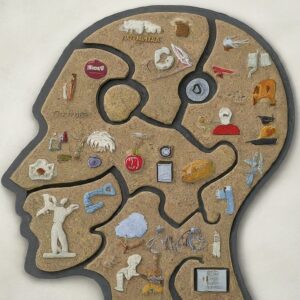In the development and marketing of individual products (and services), individual product decisions need to be made. These decisions apply to any kind of product and service and set the base for all other decisions. But which fundamental individual product decisions need to be made?
Individual product decisions required can be sorted into five categories or stages. Firstly, we look at product attributes. Branding and packaging follow. The individual product decisions are completed by labelling and product support services.

Product Attributes – Stage one of Individual Product Decisions
Individual product decisions start by deciding on product attributes. This, in turn, means that the development of a product starts by defining the benefits it will offer to consumers. These benefits are communicated as well as delivered by the product attributes. Thus, in stage one of the individual product decisions, we define the product attributes, such as quality, features, style and design.
Product Quality
One element of the product attributes is the quality of the product. Although quality can be defined in many ways, we can define it as the characteristics of a product or service that determine its ability to satisfy the customer needs. Therefore, the quality is one of the most important individual product decisions. It has a direct impact on the product’s (or service’s) performance. It is directly linked to customer value and satisfaction. So, we could say: Quality is when the customer is satisfied and will come back, while the product does not (come back).
Total Quality Management (TQM) is an approach that deals with quality in every part of the organization. All parts of the company are involved in the constant improvement of the quality of products, services, and business processes.
To be more specific, defining the product’s quality involves two levels or dimensions. These are Quality Level and Quality Consistency. Firstly, we need to choose a quality level which will support the product’s positioning. At this level, the quality can be understood as performance quality: the ability of the product to perform its functions. To give an example, a Mercedes-Benz car provides a higher performance quality than a Dacia Logan: it has a smoother ride, offers more luxury, comfort, lasts longer etc. The quality level should be chosen so as to meet the target market needs and the quality levels of competing products.
The second level is the Quality Consistency. Here, the product quality means conformance quality. Thus, we refer to freedom from defects and the consistency in delivering the targeted quality level (level of performance). At this level, the Dacia Logan can have as much quality as the Mercedes. Although it does not perform at the same level as the Mercedes (Quality Level), it can deliver the quality that customers pay for and expect (Quality Consistency).
Product Features
Another product attribute that is highly important for the individual product decisions is that of the product features. Obviously, we can offer a product with varying features. A low-level model, without any extras, or a high-level model, with a lot of features. In fact, product features can be seen as a competitive tool for differentiation. By features, we can differentiate our product from competitors’ products.
However, just adding features is not the right way to enhance customer value. A remote control does not provide additional value to a customer if it has 250 buttons and vibrates while playing music. The company always has to assess each feature’s value to customers first. Do customers really need that feature? Also, the feature’s value has to be contrasted to its cost to the company. Only features that add substantial value worth more than the marginal costs should be added.
Product Style and Design
Individual product decisions also include the product style and design. Clearly, we can add customer value by means of a distinctive product style and design. While style describes the appearance of the product, design goes deeper. Good design does not only contribute to the product’s look, but also to its usefulness. In order to find the right product design, marketers should investigate how customers will use and benefit from the product.
Branding – Stage two of Individual Product Decisions
Branding is one of the most crucial individual product decisions. Today, people do not buy a product – they buy a brand. A brand is a name, term, sign, symbol, design or a combination of these elements that identifies the products or services of one seller and differentiates them from those of competitors. To give an example, look at Coca-Cola. If you buy a bottle of coke, you do not only buy the pure beverage, you buy the brand. You buy it because you know and value the worldwide-known brand. For clothing, brands are even more important. Many people do not buy a sweatshirt because of its features – they buy it because there is a label on it showing the brand. They become part of the brand, show that they have this brand, that they can afford this brand and so on. Thus, a brand is much more than only the product, it is the whole identity around the offerings of a seller.
Therefore, branding adds significant value to a product. In short, a brand is so crucial because customers can attach meanings to brands and develop brand relationships. Branding also consumers identify products that might benefit them. The brand says something about the product’s quality and consistency. And you probably know yourself that buyers who always buy the same brand know that they will get the same benefits, features and quality each time. To go even further, the brand is the basis on which a whole story can be built about the product’s special qualities. The product gets an identity with which consumers can identify each time they buy a product of that brand.
Today, branding has become so strong that hardly anything goes unbranded. Even homogenous products such as gasoline or salt are packaged in branded containers or sold as a brand. Likewise, even fruits and vegetables are branded: on many apples, bananas and other fruits and vegetables you find the brand, such as Chiquita Bananas or Pink Lady Apples.
Packaging – Stage three of Individual Product Decisions
Going on with the individual product decisions, we land at packaging. Packaging refers to activities of designing and producing the wrapper or container for a product. The packaging of a product is a more important decision than you would expect it to be. Traditionally, the primary function of a package was to hold and protect the product. However, packaging is nowadays an important marketing tool, too. This is a result of increased competition and offer of products. Packaging must now perform many tasks, which include attracting attention, describing the product, and even making the sale.
To illustrate the importance of packaging, we will look at the highly competitive environment in supermarkets. A normal shopper passes by some 300 items per minute. Therefore, the package may be the seller’s best and last chance to influence the buyer. It has become, in fact, a significant promotional tool.
In addition, poorly designed packages can harm a lot. For instance, hard-to-open packages such as DVD cases with sticky labels or sealed plastic clamshell containers do not contribute to the buyer’s satisfaction. Indeed, customer frustration is often the result.
Finally, in making packaging decisions, companies should also have environmental considerations. “Green” packaging, meaning the use of environmentally responsible packaging materials, becomes more and more important and adds value to many products.
Labelling – Stage four of Individual Product Decisions
Labels perform several functions and are therefore one of the important individual product decisions. The most straight-forward function is to identify the product or brand. But the label can also describe several things about the product: who made it, where and when was it made, the contents, how it is to be used etc. Finally, the label can promote a brand. It supports the brand’s positioning and may help to connect with customers. By a brand logo, the label can add personality to a brand and contribute to the brand identity.
However, a label should only show and state what is true and what the customer can rely upon. Misleading or deceptive labels must be seen as unfair competition. If labels mislead customers, fail to describe important ingredients or even fail to mention required safety warnings, legal consequences are likely to follow.
Labelling has also been affected recently by unit pricing (the price per unit of standard measure must be stated), open dating (the expected shelf life of the product must be mentioned) and nutritional labelling (the nutritional values in the product must be shown). These elements are required by law.
Product Support Services – Stage five of Individual Product Decisions
Individual product decisions also include product support services. Usually, the company’s offer includes some form of customer service, of product support services. This can be a minor part of the product or a major part of the total offering. Product support services contribute to the augmented product, as defined by the three levels of product. Without doubt, support services do also belong to the significant individual product decisions because they contribute to the customer’s overall brand experience. The key is to keep customers happy after the sale in order to build lasting relationships.
Besides these individual product decisions, many other choices need to be made. However, these five individual product decisions built the base for the product development and marketing. If individual product decisions are made carefully in accordance with consumer needs and wants, the product can become a success.




